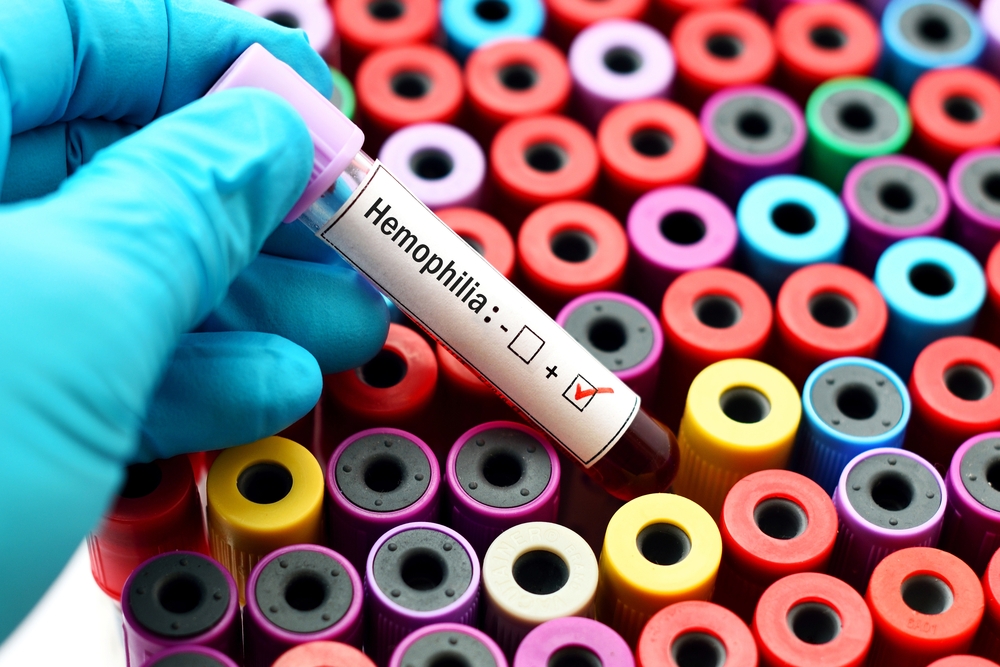Immunoadsorption May Be Useful Add-on Therapy in Acquired Hemophilia

Immunoadsorption, or the selective removal of antibodies from the blood, might prove useful as an add-on treatment for patients with acquired hemophilia, according to a recent study.
If confirmed, this finding could lead to better treatment for life-threatening bleeds, delayed treatment responses, and adverse responses to immunosuppressive therapy among people with this rare, non-inherited bleeding disorder.
The study, “Immunoadsorption for the Treatment of Acquired Hemophilia: New Observational Data, Systematic Review, and Meta-Analysis,” was published in the journal Transfusion Medicine Reviews.
Acquired hemophilia — in which the body’s immune system mistakenly produces antibodies, otherwise known as autoantibodies, that target and block its own factor VIII blood clotting proteins — is difficult to treat because patients often have severe bleeds.
One treatment option for acquired hemophilia is immunoadsorption (IA). This consists of filtering the autoantibodies out of patients’ plasma, which is the clear portion of the blood that remains after red blood cells and other cellular components are removed.
Despite being a suggested treatment, no randomized trials have evaluated IA’s effectiveness — and few scientific studies have described its efficacy in practice.
To gain a clearer picture of the value of IA, researchers from the Inselspital, Bern University Hospital, in Switzerland, reviewed the available literature on the use of immunoadsorption, including all cases of patients treated at their institution between 2002 and 2019.
Altogether, the team found records of 106 individuals treated with IA across 10 studies.
The treatment periods ranged from 43 days to 14 years, and the patients’ ages ranged from 14 to 89.
In most cases, treatment resulted in complete remission (86% of cases) and reduced autoantibodies (95%). The mortality rate was 7%.
The pooled data in this analysis generally showed better results than those in the previous, smaller studies. Complete remission rates in several publications ranged from 61% to 73% and mortality from 26% to a high of 43%.
Among the 12 patients treated at the investigators’ hospital, IA treatment was mainly given for either a failed response to immunosuppressive therapy alone, severe and uncontrollable bleeds, or high autoantibody levels.
Upon admission, factor VIII activity stood below 1 international units (IU)/dl — from a normal range of 50 to 150 IU/dl — for nine patients. The median level of FVIII inhibitors, or neutralizing antibodies, was 20 Bethesda units (BU)/ml.
Over the course of a year, median factor VIII activity among these patients climbed from 34 IU/dl at 30 days post-treatment to 147 IU/dl. Median FVIII inhibitors levels fell from 1.1 BU/ml to zero (data from two patients) over the same period.
Bleeding stopped in nine individuals; three patients did not respond to treatment.
The possibility of a “publication bias” — which means that studies in which IA treatments proved unsuccessful may be less likely to have been reported — could not be ruled out, the investigators said. Other study limitations were the lack of data from clinical trials with a control group, and from studies in which participants were randomly assigned to different approaches, they said.
Still, the researchers added that the recovery rate observed in this study appeared high, considering that all patients were deemed high risk for bleeding and were resistant to other treatments.
Although the investigators were unable to rigorously assess the added value of IA in this study, the findings of such a high rate of complete remission and a low rate of side effects led them to view IA as likely beneficial and deserving of further study.
“We believe that adjunctive IA is justified in selected high-risk patients with acquired hemophilia,” the researchers wrote, adding that “future register data would be expected to add important information to the current state of knowledge.”






